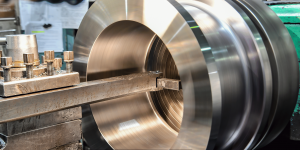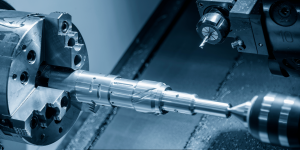CNC manufacturing has dramatically influenced the production of complex and accurate automobile parts. CNC machines operate through a computer program that controls the movements and the functioning of various tools such as the drill, lathe, milling machine, and router, among others. This makes it possible to produce intricate parts from metals, plastics, wood, and any other material at high speed and precision in an equal manner.
Engine Parts
Small but vital parts of the engine are produced using these CNC machines.

This includes:
Cylinder Heads
Cylinder heads are located on top of cylinders in car engines. CNC plants employ the use of milling and drilling techniques in carving the intricate channels and cavities in cylinder heads that channel the fuel/air mixture and exhaust.
Pistons
The pistons reciprocate and transfer the force from expanding gases to the crankshaft. CNC lathes and mills cut pistons from aluminium or steel to desired forms and dimensions to fit cylinders in the engine. Cooling channels and ring grooves are also machined with the help of Computer Numerical Control.
Valves and Camshafts
Valves control the amount of air/fuel mixture that enters the engine cylinders and that which is expelled out of the same. The camshaft determines when the valve is opened or closed. CNC turning centres and grinding machines produce valves and camshafts of various types and materials; all with exact dimensions.
Engine Blocks
CNC machining centers use drills, borers, taps, and mills to trim and contour cast-metal engine blocks for accurate dimensional conformity. This helps to ensure that the cylinder bore is precisely suited to the pistons, cylinder heads, bearings, and all assembled parts.
Transmission Parts
CNC applications in transmission parts production include:
Gears
A gear transmits rotation/torque and is used in transmissions or differential. CNC gear-cutting machines utilize form-relieved cutters to create external and internal gears with accurate teeth profiles.
Bearings
Bearings help in the smooth rotation of shafts/gears and can also withstand high loads. The inner and outer rings of the bearing are turned and ground on CNC turning and grinding machines to ensure micrometrical finishes. The grooves, holes and the channels for lubrication are also created through the CNC.
Shafts and Axles
Splined shafts and axles turn wheels, that is, transmit power to them. Machining uses CNC lathes, mills and grinders to manufacture them out of hardened steel with precision on dimensions such as diameters, finishes and splined profiles.
Chassis Parts
Various chassis components are also CNC mass-produced, including:

Brake Discs/Drums
CNC lathes machine brake discs/drums from cast iron inaccurate specifications to accommodate wheel hubs. Friction surfaces are also ground to a particular roughness using computer numerical control (CNC).
Wheels/Rims
Light alloy wheels and rims are produced through the use of computerised numerically controlled machining centres. This includes operations like cutting, drilling, and finishing in order to get the desired shapes, bolt locations, and offsets within tiny margins of error.
Steering/Suspension Parts
Using CNC turning, tie rods, ball joints, control arms, and strut housings can be precision made with tight tolerances. Some of the critical suspension parts must come in contact in a proper manner each time the car steering or suspension is in motion.
Custom/Aftermarket Parts
Beyond OEM part manufacturing, CNC plants also cater to custom and aftermarket requirements:
Performance Parts
Aftermarket suppliers employ CNC machining to manufacture special alloy intake manifolds, turbocharger housings, racing camshafts, and so on to increase engine power.
Accessories
Custom automotive interior and exterior accessories such as gear knobs, foot pedals, alloy wheel embellishments, trim kits, and body kits are produced on small quantity CNC routers and mills.
Replacement Parts
Engine covers, oil pans, pulleys, sprockets, flanges etc that are old models or in bad condition but unavailable from car manufacturers are duplicated on CNC mills from samples provided by the customer.
Conclusion
From critical powertrain components and chassis hardware to custom accessories needed for automobiles, CNC can do small but intricate parts at huge volumes with high accuracy. Sustaining of CNC together with others such as 3D printing is expected to increase opportunities and improve on the quality of the machined car parts.
